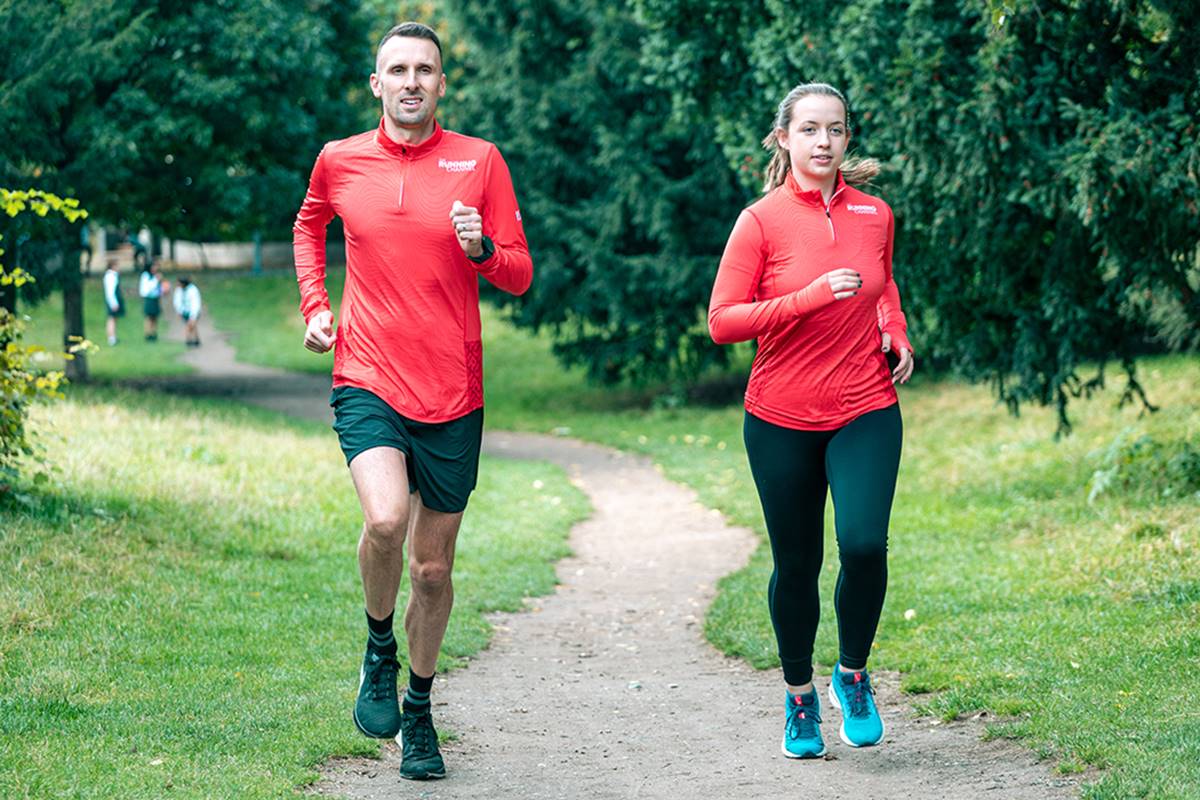

Featured
Is It Okay To Workout When Feeling Sore
Modified: August 18, 2023
Discover if it's safe to exercise with muscle soreness. Find out how to relieve pain and promote recovery. Don't miss this featured guide!
Introduction
Feeling sore after a tough workout can be both a sign of progress and a hinderance to your fitness routine. It’s no secret that pushing yourself during workouts can lead to muscle soreness, which is often accompanied by stiffness and discomfort. Many people wonder if it’s okay to continue exercising when they’re feeling sore, or if they should take a break to allow their muscles to recover.
While there’s no one-size-fits-all answer to this question, understanding the causes and effects of muscle soreness can help you make an informed decision about your fitness routine. In this article, we’ll explore the pros and cons of working out when feeling sore, as well as factors to consider before deciding to push through the discomfort.
Muscle soreness, also known as delayed onset muscle soreness (DOMS), is a normal response to exercise. It typically occurs when you engage in activities that your muscles aren’t used to or when you push yourself beyond your limits. During intense exercise, micro-tears occur in your muscle fibers, leading to inflammation and subsequent soreness.
While muscle soreness can be uncomfortable, it’s often a sign that your body is adapting to the demands of your workouts. Over time, as your muscles repair and strengthen, they become better equipped to handle similar stresses in the future. However, it’s essential to listen to your body and understand when it needs rest:
Understanding Muscle Soreness
Muscle soreness, also known as delayed onset muscle soreness (DOMS), is a common occurrence after engaging in strenuous physical activity. It is characterized by muscle pain, tenderness, stiffness, and reduced range of motion. Understanding the causes and mechanisms behind muscle soreness can help you navigate your workouts more effectively.
When you exercise, especially if you’re pushing your limits or introducing new movements, your muscles experience micro-tears in the muscle fibers. This microscopic damage triggers an inflammatory response in the body, leading to soreness and discomfort. The extent of muscle soreness can vary depending on factors such as exercise intensity, duration, and individual fitness levels.
The pain and stiffness associated with muscle soreness typically peak within 24 to 72 hours after the workout and gradually subside over the next few days. It’s important to note that muscle soreness is different from acute pain, such as an injury or strain. If you experience sharp or persistent pain during or after exercise, it’s important to consult with a healthcare professional.
While muscle soreness can be unpleasant, it is generally a sign that your body is adapting and becoming stronger. The muscle fibers that were damaged during exercise go through a process called remodeling, where they repair themselves and become stronger in preparation for future challenges. This process is an essential part of building muscle and improving fitness levels.
It’s worth mentioning that muscle soreness is not a reliable indicator of muscle growth or workout effectiveness. Sometimes, you may not experience significant soreness after a workout, despite making progress. On the other hand, intense soreness does not always translate to faster results or better gains. It’s important to focus on overall progression and listen to your body rather than solely relying on soreness as a measure of success.
Understanding muscle soreness can help you adapt your training accordingly. If you’re new to exercise or returning after a long break, it’s normal to experience more soreness. Gradually increasing the intensity and volume of your workouts, allowing for proper rest and recovery, can help minimize muscle soreness and prevent overexertion.
Pros and Cons of Working Out When Feeling Sore
Deciding whether to continue working out when feeling sore can be a tricky decision. There are both advantages and disadvantages to consider before making your choice. Let’s delve into the pros and cons of exercising while experiencing muscle soreness.
Pros:
- Increased blood flow: Engaging in light exercise can stimulate blood flow to the muscles, which can aid in recovery and alleviate soreness.
- Active recovery: Light exercise, such as low-impact activities or gentle stretching, can facilitate the removal of metabolic waste and help with muscle repair.
- Mental well-being: Exercise releases endorphins, which are natural mood-enhancers. Continuing to work out, even when sore, can help boost your mental well-being and provide a sense of accomplishment.
- Improved range of motion: Gentle movement and stretching can help alleviate stiffness and improve flexibility, making it easier to perform everyday activities.
Cons:
- Risk of injury: Exercising with significant muscle soreness can increase the risk of injury, as your body may not have fully recovered from the previous workout.
- Compromised form and technique: When you’re feeling sore, you may instinctively alter your form to avoid aggravating the affected muscles. This can lead to poor technique, increasing the risk of injury and hindering progress.
- Reduced performance: Soreness can impact your strength, endurance, and overall performance. Pushing through intense exercise when your body is already fatigued may not yield the desired results and can impede recovery.
- Impaired muscle repair: While light exercise can aid muscle recovery, intense workouts can hinder the repair process. Overworking already damaged muscle fibers can delay healing and prolong soreness.
Ultimately, the decision to work out when feeling sore should be based on several factors, including the severity of soreness, individual fitness levels, and personal goals. It’s essential to listen to your body and make a judgment call on a case-by-case basis.
Factors to Consider
When deciding whether to continue working out while experiencing muscle soreness, it’s important to take into account various factors that can influence your decision. Consider the following factors before determining the best course of action:
1. Severity of Soreness:
Assess the intensity and duration of your muscle soreness. If the soreness is mild and only affects a specific muscle group, you may be able to safely continue exercising. However, if the soreness is severe, widespread, or accompanied by sharp pain, it may be best to prioritize rest and recovery.
2. Individual Fitness Levels:
Your fitness levels and exercise experience play a role in how your body responds to muscle soreness. Beginners or individuals who are new to a particular exercise may experience more pronounced soreness. On the other hand, seasoned athletes may be accustomed to working out through mild soreness.
3. Training Goals:
Consider your training goals and the impact of working out while feeling sore. If you’re training for a specific event or competition, pushing through soreness may be necessary. However, if your primary goal is overall health and well-being, it’s important to prioritize proper rest and recovery.
4. Frequency and Intensity of Workouts:
Take into account the frequency and intensity of your workouts. If you’ve been consistently pushing yourself with high-intensity workouts, it may be beneficial to incorporate rest days or active recovery sessions into your routine to prevent overtraining and reduce the risk of burnout or injury.
5. Variety in Training Modalities:
Consider diversifying your training program to include different types of exercises and modalities. Incorporating activities that target different muscle groups or focus on different energy systems can provide restorative benefits and give sore muscles a chance to recover.
By considering these factors, you can make a more informed decision about whether to continue exercising when feeling sore or to prioritize rest and recovery.
Listen to Your Body
One of the most important factors to consider when working out while feeling sore is to listen to your body. Your body has its own way of communicating its needs and limitations. Paying attention to these signals can help you make the right decisions regarding your workout routine. Here are some key considerations to keep in mind:
1. Pain vs. Discomfort:
Distinguish between normal discomfort associated with muscle soreness and pain that could indicate an injury. A certain level of discomfort is to be expected when exercising with muscle soreness, but sharp or acute pain should not be ignored and may require medical attention.
2. Energy Levels:
Assess your energy levels before and during your workout. If you’re feeling extremely fatigued or lacking the energy to perform your exercises with proper form, it’s a signal that your body may need more rest. Pushing through in this case can increase the risk of injury and hinder progress.
3. Range of Motion:
Observe any limitations in your range of motion. If you’re experiencing decreased flexibility or stiffness that impedes your ability to perform exercises properly, it may be a sign that your muscles need time to recover. Pushing through these limitations can strain muscles and potentially lead to injury.
4. Psychological Well-being:
Consider the impact of exercising on your mental well-being. While working out can have mood-enhancing benefits, pushing through intense workouts while feeling excessively sore can lead to mental burnout or a negative association with exercise. Take care of your mental health by allowing yourself rest and recovery when needed.
5. Recovery Time:
Monitor how quickly you recover from workouts. If you find that you’re consistently struggling to recover within a reasonable timeframe, it might be an indication that you need to incorporate more rest days into your routine or modify the intensity and volume of your workouts.
Remember, your body is unique, and what works for others may not work for you. Trust your instincts and be mindful of the signals your body is sending you. It’s always better to err on the side of caution and prioritize rest and recovery when needed.
Types of Workouts to Consider
When you’re feeling sore, it’s important to choose the right types of workouts that can complement your recovery process and minimize further muscle damage. Here are some workout options to consider:
1. Active Recovery:
Engaging in low-intensity activities can help promote blood flow, reduce stiffness, and aid in muscle recovery. Examples of active recovery include light walks, gentle yoga or stretching, swimming, or using a foam roller for self-myofascial release.
2. Low-Impact Exercises:
Low-impact exercises provide a gentler workout for your joints and muscles while still allowing you to stay active. Options such as cycling, elliptical training, or using a rowing machine can provide cardiovascular benefits without putting excessive strain on sore muscles.
3. Bodyweight Workouts:
Bodyweight exercises can be a good option when you’re feeling sore, as they allow you to control the intensity and focus on proper form. Incorporating exercises like squats, lunges, push-ups, planks, or modified versions of strength training movements can help build strength while minimizing additional muscle damage.
4. Flexibility and Mobility Training:
During muscle soreness, it’s important to pay attention to your flexibility and joint mobility. Incorporating exercises that improve range of motion, such as yoga or Pilates, can help relieve muscle tension and promote recovery.
5. Restorative Activities:
Consider engaging in activities that promote overall relaxation and stress reduction. This can include activities like meditation, deep breathing exercises, or gentle tai chi sessions. These activities can contribute to your physical and mental well-being, allowing your body to recover more effectively.
Remember, the goal during these workouts is to facilitate recovery, not to push your limits or achieve new performance milestones. Make sure to listen to your body, modify movements as needed, and prioritize proper form and technique.
Rest and Recovery Strategies
Rest and recovery are essential components of any effective fitness routine, especially when you’re feeling sore. Here are some strategies to help you optimize your rest and recovery:
1. Adequate Sleep:
Quality sleep is crucial for muscle repair and growth. Aim for 7-9 hours of uninterrupted sleep each night to support your body’s recovery process.
2. Nutrition:
Eat a well-balanced diet that includes lean proteins, complex carbohydrates, and healthy fats to provide your body with the necessary nutrients for muscle repair. Make sure to stay properly hydrated as well.
3. Active Rest Days:
Include active rest days in your training schedule. On these days, engage in light activities that promote blood flow and relaxation, such as walking, swimming, or gentle stretching.
4. Massage or Foam Rolling:
Consider incorporating self-massage techniques or using a foam roller to relieve muscle tension and promote blood circulation. This can aid in the recovery process and alleviate soreness.
5. Contrast Showers or Ice Baths:
Alternating between warm and cold water in the shower or taking ice baths can help reduce inflammation and promote faster recovery. However, it’s important to listen to your body and avoid extreme temperature changes if they cause discomfort.
6. Active Stretching and Mobility Exercises:
Engage in gentle stretching and mobility exercises to improve flexibility, release tension, and enhance recovery. Incorporate exercises that target the muscles and areas that feel particularly sore.
7. Stress Management:
Stress can hinder the recovery process. Include stress management practices in your routine, such as meditation, deep breathing exercises, or engaging in activities that help you relax and unwind.
8. Gradual Progression:
Avoid jumping back into intense workouts too quickly after experiencing muscle soreness. Gradually increase the intensity and volume of your workouts as your muscles recover and adapt.
Remember that rest and recovery are just as important as the actual workouts. By implementing these strategies, you can support your body’s healing process and minimize the risk of further injury or prolonged soreness.
Tips for Exercising Safely
When exercising, especially when feeling sore, it’s crucial to prioritize safety to prevent injuries and promote overall well-being. Here are some tips to help you exercise safely:
1. Warm Up Properly:
Before jumping into your workout, make sure to warm up your muscles with dynamic stretching or light aerobic exercises. This helps increase blood flow and prepares your body for the upcoming workout.
2. Practice Good Form:
Focus on maintaining proper form and technique during your exercises. This not only helps prevent injuries, but it also ensures that you are targeting the intended muscle groups effectively.
3. Listen to Your Body:
Pay attention to any warning signs or pain signals during your workouts. If something doesn’t feel right or if you experience sharp pain, stop the exercise and consult with a healthcare professional if necessary.
4. Gradually Increase Intensity:
Avoid the temptation to push yourself too hard, especially when feeling sore. Gradually increase the intensity, duration, or weight of your exercises over time to allow your body to adapt and prevent overexertion.
5. Incorporate Rest Days:
Give your body adequate time to rest and recover by scheduling regular rest days in your workout routine. This allows your muscles to repair and grow stronger, reducing the risk of overuse injuries.
6. Hydrate Properly:
Stay hydrated before, during, and after your workouts. Dehydration can lead to muscle cramps, fatigue, and impaired performance. Aim to drink water consistently throughout the day.
7. Modify Intensity and Range of Motion:
Adjust your workouts according to your current level of soreness. Reduce the intensity or range of motion of exercises to accommodate for any discomfort and allow your muscles to recover.
8. Seek Professional Guidance:
If you’re unsure about how to safely continue exercising while feeling sore or if you have specific concerns or limitations, consider consulting with a certified personal trainer or healthcare professional who can provide guidance tailored to your needs.
By implementing these safety tips, you can minimize the risk of injuries and create a safe and effective workout routine, even when you’re feeling sore.
Conclusion
When it comes to working out while feeling sore, there is no one-size-fits-all answer. It ultimately boils down to understanding your body, listening to its signals, and making informed decisions about your fitness routine. While light exercise and active recovery can help alleviate muscle soreness and promote blood flow, it’s important to prioritize rest and recovery when needed.
Factors such as the severity of soreness, individual fitness levels, training goals, and workout intensity and frequency should all be taken into consideration. It’s crucial to strike a balance between pushing yourself to make progress and giving your body the time it needs to repair and rebuild.
Remember to listen to your body, differentiate between normal discomfort and pain, and respect your limits. Incorporate rest days, proper nutrition, and other recovery strategies to support your body’s healing process. Modify the intensity and range of motion of exercises when necessary, and don’t hesitate to seek guidance from professionals if needed.
Ultimately, the goal is to create a sustainable and balanced fitness routine that takes into account both your physical and mental well-being. With careful consideration, you can navigate the realm of working out when feeling sore in a safe and effective manner, allowing you to continue progressing towards your fitness goals.









